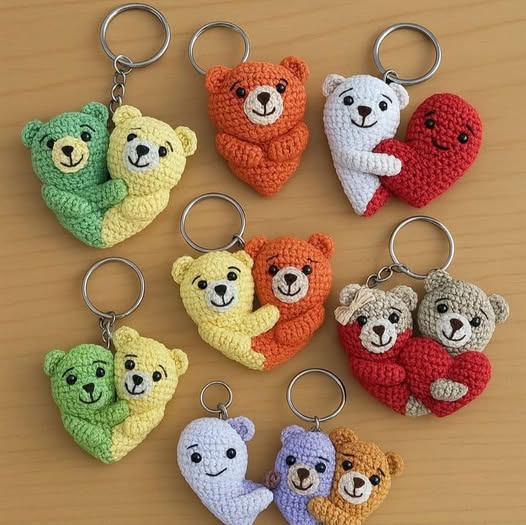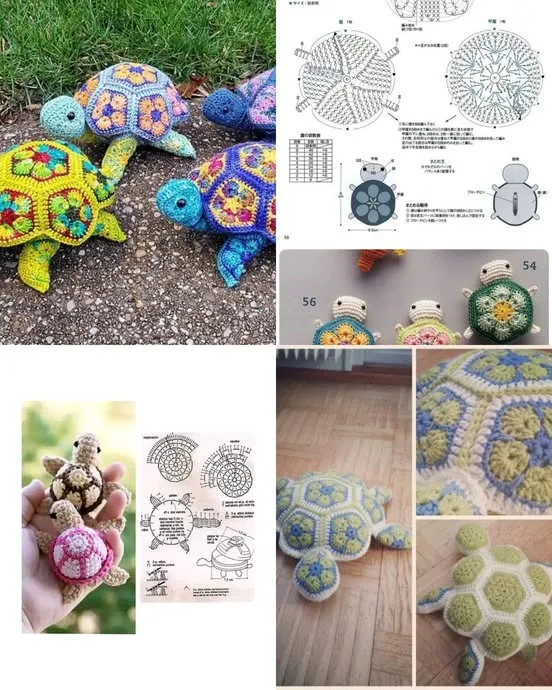
The Crochet an African Flower Turtle: Free Patterns project is a delightful combination of creativity, color, and skill. This pattern allows crafters to make an adorable, multi-colored turtle inspired by the iconic African Flower motif.
African Flower crochet motifs are famous for their geometric beauty and vibrant colors, and when applied to a turtle, they create a playful and visually striking amigurumi toy.
Whether you’re a beginner or an experienced crocheter, this project offers a fun way to practice different crochet techniques while creating a charming handmade item.

Creating a Crochet an African Flower Turtle: Free Patterns is more than just following a set of instructions—it’s about exploring color combinations, textures, and shapes.
Each motif represents a small flower that comes together to form the turtle’s shell. This modular approach allows you to experiment with different colors, yarns, and arrangements, giving every turtle a unique personality. The finished turtle is perfect for gifts, decoration, or a fun companion for children.
This pattern also helps improve your crochet skills, particularly in joining motifs, shaping amigurumi, and working with multiple colors. It’s an engaging project that combines artistry with practical crochet techniques. In this guide, we’ll walk you through everything you need to know to make your own Crochet an African Flower Turtle: Free Patterns, including materials, techniques, assembly, and creative variations.
Selecting the right materials is essential for a successful Crochet an African Flower Turtle: Free Patterns project. Yarn choice affects both the appearance and durability of the finished turtle. Cotton yarn is ideal because it holds its shape well and shows colors vibrantly. You can also use acrylic or cotton-blend yarns for a softer and more flexible feel.
The African Flower motifs are typically worked with multiple colors. Choosing contrasting or complementary shades can make each petal and motif stand out. For example, you might use bright colors like red, yellow, and blue for petals, paired with neutral colors such as beige or brown for the turtle’s body.
You will also need a suitable crochet hook that matches your yarn weight, fiberfill stuffing for shaping the turtle, stitch markers, and a yarn needle for assembly. Safety eyes or embroidered features can be used for the face. Pre-washing your yarn is optional but can help prevent minor shrinkage after the project is completed.
For added texture and visual interest, consider mixing smooth cotton with textured or slightly fuzzy yarn. This adds a unique tactile quality to your Crochet an African Flower Turtle: Free Patterns and makes it more engaging to touch and play with.
Finally, plan your color scheme carefully before starting. Laying out your yarn choices and testing motif combinations can help you visualize the final turtle shell and ensure a harmonious result.
The heart of the Crochet an African Flower Turtle: Free Patterns lies in its African Flower motifs. These small, geometric flowers form the turtle’s shell when joined together. Begin each motif with a magic ring and work outward, following a petal-based pattern. Typically, each flower has a central color surrounded by contrasting petal colors.
Consistency in tension is key when creating motifs to ensure they are uniform in size and shape. Each motif is usually worked in rounds, with clusters of double or treble crochet stitches forming the petals. As you finish each motif, weave in the yarn ends carefully to maintain a neat appearance.
Once you have multiple motifs, it’s time to join them into a cohesive shell. Joining can be done using slip stitches, single crochet, or whip stitching. The arrangement should form a dome-like structure that will sit comfortably atop the turtle’s body.
You can create different effects by varying the number of petals or alternating colors in each motif. This customization makes your Crochet an African Flower Turtle: Free Patterns unique and visually captivating.
As you work, make sure all motifs are flat and even before joining. Pressing motifs lightly with an iron or hand shaping can help maintain symmetry and improve the overall finish of the shell.
After creating the shell motifs, it’s time to assemble the Crochet an African Flower Turtle: Free Patterns. Begin by preparing the body, usually worked in rounds with single crochet stitches. Shape the head, legs, and tail separately before attaching them to the main shell.
Stuff the body parts with fiberfill gradually to maintain a firm but soft shape. The legs should be evenly positioned to allow the turtle to sit upright, while the tail is placed at the center back. Sew each piece securely using a yarn needle, ensuring no loose ends remain that could compromise durability.
Next, attach the shell to the body. Position it so that the turtle’s head and legs extend naturally from underneath. Sew the shell along the edges, keeping the stitches neat and invisible. The shell should maintain its dome shape without sagging or collapsing.
Adding facial details gives the turtle personality. Safety eyes, embroidered eyes, or small buttons can be used. A tiny embroidered smile adds charm, while maintaining a playful and approachable look.
Finally, check all seams, edges, and joints for strength. The assembled turtle should be sturdy and durable, suitable for handling, display, or gentle play.
The Crochet an African Flower Turtle: Free Patterns allows for endless creativity. You can experiment with different color palettes for the shell motifs, from bright, bold combinations to soft, pastel hues. Each turtle can have its own personality and style.
Consider adding small embellishments, such as beads in the center of each flower, for extra sparkle. Using textured yarn for some petals adds depth and a tactile dimension. You can also vary the size of the motifs to create larger or smaller turtles, ideal for gifting or collecting.
Mixing yarn weights or types can produce unique visual effects, while changing the number of motifs in the shell affects the overall size and shape of the turtle. Some crafters enjoy making a whole family of African Flower turtles with coordinated or contrasting colors.
For special occasions, create seasonal or themed turtles by selecting holiday-inspired colors or adding tiny crocheted accessories like scarves or bows. This customization makes the Crochet an African Flower Turtle: Free Patterns not only fun to make but also versatile and meaningful.
1. Is this pattern suitable for beginners?
Yes, with basic knowledge of crochet stitches and working in rounds, beginners can create this turtle. Some experience with motif joining is helpful.
2. What type of yarn works best?
Cotton yarn is ideal for its shape retention and vibrant colors, though acrylic or cotton blends are also suitable.
3. How many motifs are needed for the shell?
Typically, 12–15 motifs are joined to form the turtle shell, but you can adjust for smaller or larger turtles.
4. Can I use safety eyes or embroidery for the face?
Both options are suitable. Safety eyes give a polished look, while embroidery is safer for young children.
5. How do I join the motifs?
Slip stitches, single crochet, or whip stitch can be used. Ensure even spacing and secure attachment.
6. Can I wash the finished turtle?
Hand wash in cool water with mild detergent. Gently reshape and air dry to maintain structure.
7. Can I sell these turtles?
Yes, handmade African Flower turtles are great for selling at craft fairs or online platforms.
The Crochet an African Flower Turtle: Free Patterns project is a fun, creative, and rewarding crochet endeavor. It combines the geometric beauty of African Flower motifs with the charm of a small amigurumi turtle. The pattern enhances crochet skills, encourages experimentation with colors and textures, and results in a delightful finished product suitable for gifting, decoration, or play.
By following this guide, you can create a unique turtle that showcases your creativity and attention to detail. Whether you make one turtle or a family of them, each is sure to be a cherished handmade piece.
Share your feedback, experiences, and variations to inspire others to enjoy the craft of crochet and the joy of African Flower turtles.
